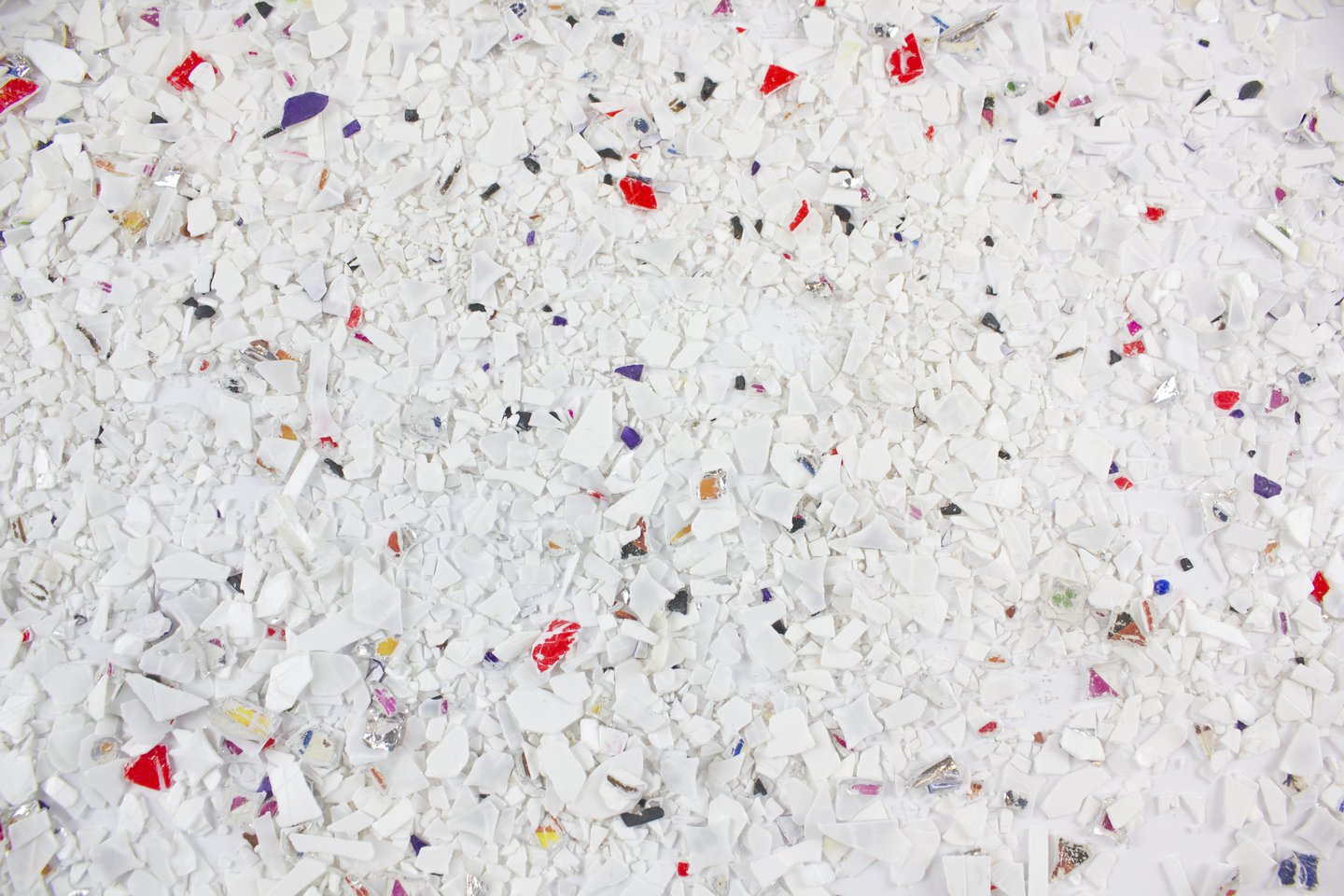
Smile Plastics may well be a familiar brand name, and indeed material, to anyone working in the fields of design and architecture. The distinctive mottled and often colour-clashing surfaces were conceived in the early 1990s and became synonymous with the recycling movement that had begun to gain traction as the century drew to an end.
Smile Plastics offered the first sheet material made fully from recycled plastic and became an iconic brand up until 2010, when its instigator Colin Williamson retired without anyone to carry on manufacturing the material. That is until designers Adam Fairweather and Rosalie McMillen picked up the baton and re-launched the brand at the London Design Festival in 2015.
The design duo have a unique synergy with the material having both used recycled materials in their own individual work - Adam creating the concept of a disposable coffee cup made from recycled coffee grounds in 2004, and Rosalie having also used recycled metals and coffee in her jewellery for a number of years.
Furthermore, the pair share a balanced approach to developing the brand - Adam brings the technical materials expertise, whilst Rosalie focuses more on the aesthetics of the materials and the relationship we have with them. They’ve already come on a long way in two short years, adding their new South London gallery to their original and pre-existing production unit based near Swansea on the Gower.
We caught up with them in London to find out more about their still-unique product.
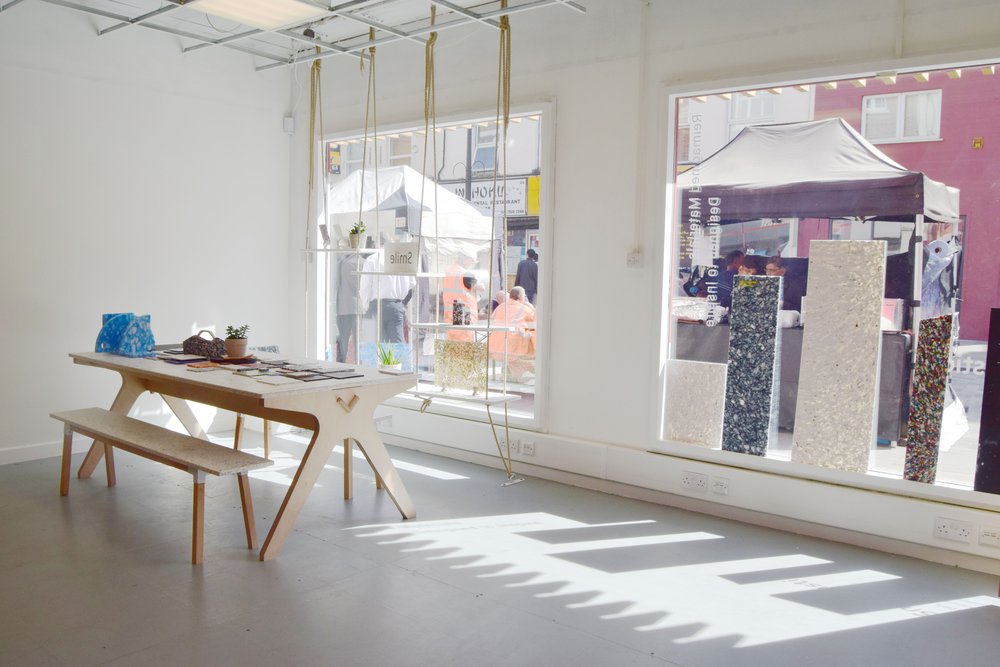
Smile Plastic Gallery
How would you describe your materials?
"We make reimagined materials designed to inspire."
What is involved in the process of making your surface materials?
"We have a number of unique processes in order to make our materials but the basic formula is to use pressure and heat in order to fuse the plastics waste into large architectural panels."
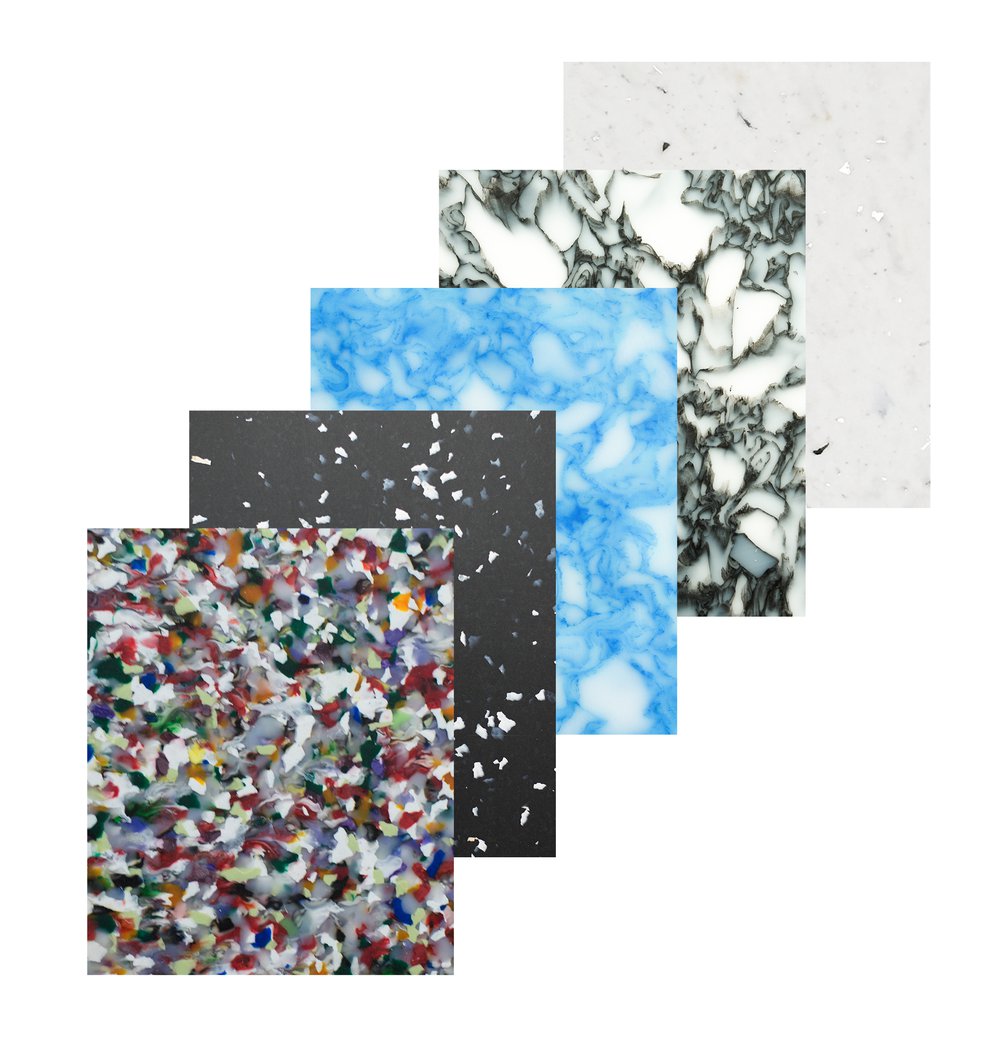
What ‘waste’ materials are involved?
“We have a standard range of materials that are made from waste sources such as yoghurt pots, plastic bottles and food trays, and then we also work with clients to create completely bespoke materials and have played around with sea plastic, refrigerator plastics, WEE waste, plant pots and coffee grounds to name a few materials.”
How do you obtain these materials? There must be loads of waste plastic that you can get hold of and transform?
“Technically, yes there is. But it’s a very challenging process to achieve consistently high quality plastics waste in terms of the sourcing, cleaning and processing of the plastics. There is an awful lot of processing required before we make our panels. Cleaning, and cutting down the plastics into small pieces is one part of the process, but we also hand treat our waste streams to make our unique patterns and textures.”
Are the waste materials combined with other materials?
“Yes we frequently combine different waste streams into a single material. Most of the time the combinations of waste streams are of the same plastic type but we have also found a way of combining different material types such as coffee grounds with plastic.”
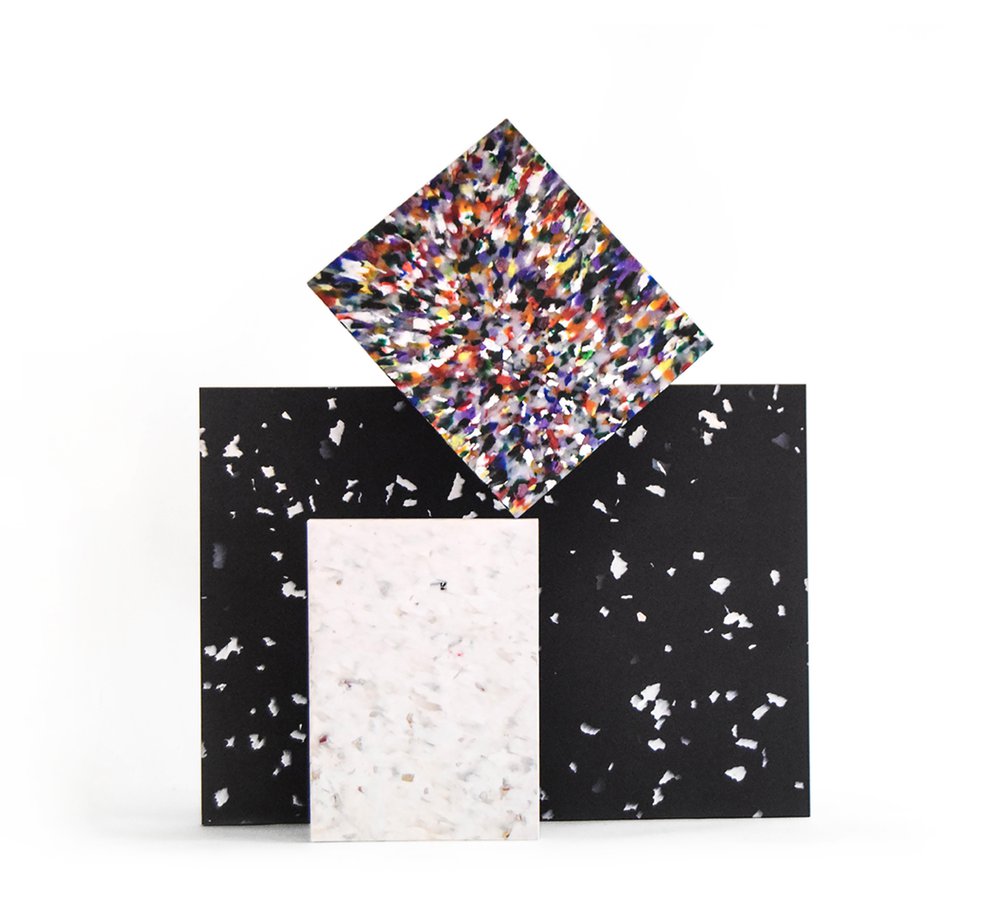
How big/small can your materials be made? And how much can you produce?
“We have the capability to make our sheets on a very small scale of just a few centimeters across but most of the time our panels are 2m x 1m. The material would be capable of being manufactured at a larger scale but at present we can rarely go beyond this with our existing equipment.
"At the moment our production volumes are also fairly modest but we are in the process of scaling up our production facility so that we can meet the current and future demand for our materials as well as looking for investors to scale-up the business.”
Have you found specifiers/clients seek you out to use your materials because of the recycling element?
“Clients come to us because they love the unique surfaces that we create and it’s an added bonus that all our materials are 100% recycled and recyclable. I think designers these days demand local sustainable materials for their projects.”
Have you ever had to make alterations in how you produce your materials, or adapted materials for a client specification?
“Well not exactly, although Smile Plastics is constantly going through iterations of both its manufacturing processes and its materials. We are highly dynamic in the sense that we can make completely bespoke artisan materials for our clients according to their material, colour and pattern preferences.”
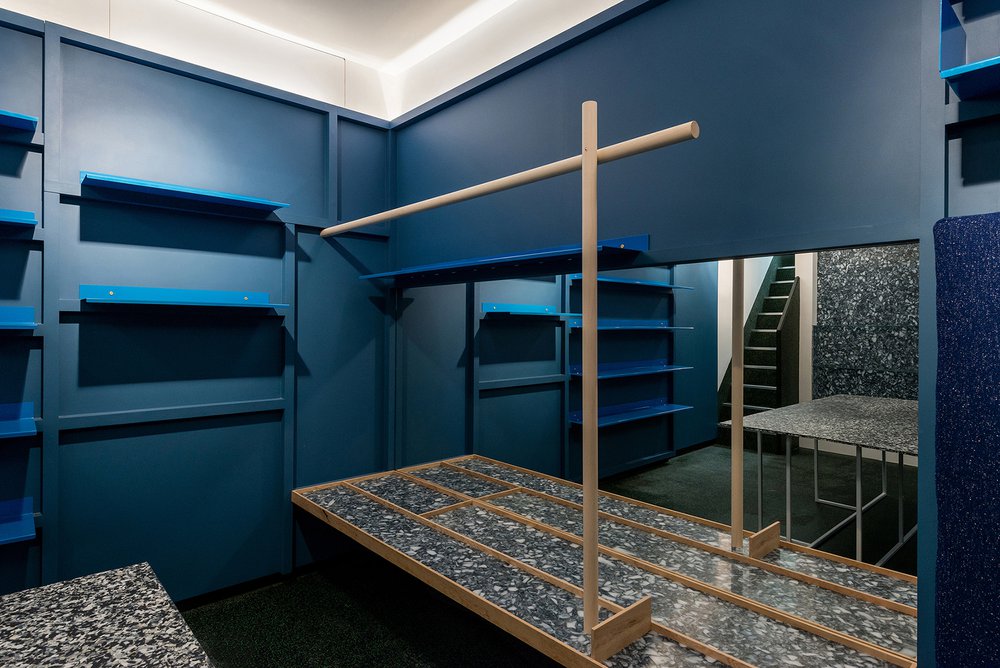
Eastern Biological Shop
Is there a common context in which your materials get used?
“We work with a broad range of designers for a wide-ranging applications from architecture to art. They are especially used as highlights in design-led spaces like bars, museums, offices and retail spaces. People buy our materials because they are stunning, sustainable and they have a fantastic narrative, which is present in the material itself.”
Any notable projects to date?
“We love making bespoke artisan materials for our clients and have been involved in a number of really exciting projects including making some bespoke panels for Selfridges and the Wellcome Trust. Recently we have also started doing some more design and build projects for customers and have just completed a coffee bar made from recycled plastics and reclaimed timber for Citibank in Canary Wharf.”